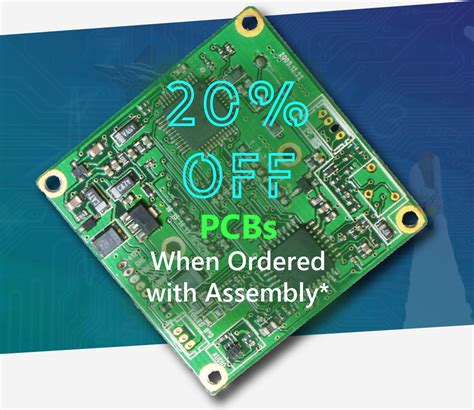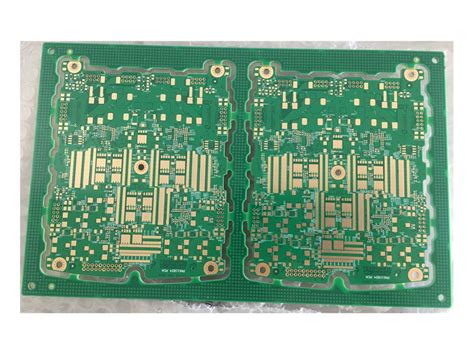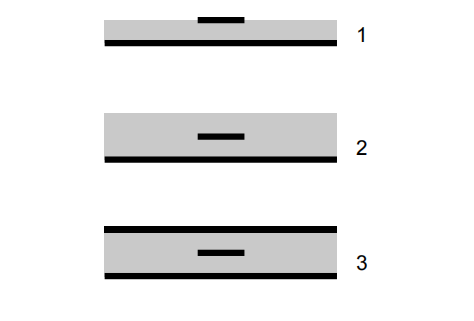High frequency pcb design software
Key Features to Look for in High Frequency PCB Design Software
When selecting high frequency PCB design software, it is crucial to consider several key features that can significantly impact the efficiency and effectiveness of the design process. As the demand for high-speed and high-frequency electronic devices continues to grow, the need for sophisticated design tools becomes increasingly important.
One of the primary features to look for in high frequency PCB design software is the ability to handle complex signal integrity issues.
High frequency circuits are particularly susceptible to signal degradation, crosstalk, and electromagnetic interference. Therefore, software that offers advanced signal integrity analysis tools can help designers predict and mitigate these issues early in the design process, ensuring optimal performance of the final product.
In addition to signal integrity analysis, another essential feature is the software’s capability to perform electromagnetic compatibility (EMC) analysis.
High frequency designs often face challenges related to electromagnetic emissions and susceptibility. Software that provides comprehensive EMC analysis tools can assist designers in identifying potential problem areas and implementing design changes to meet regulatory standards and minimize interference with other electronic devices. This feature is particularly important in industries such as telecommunications, aerospace, and automotive, where compliance with strict EMC regulations is mandatory.
Moreover, the ability to simulate and model high frequency components accurately is a critical feature in PCB design software.
Accurate modeling of components such as transmission lines, antennas, and filters is essential for predicting the behavior of high frequency circuits. Software that includes a robust library of models and the capability to create custom models allows designers to simulate real-world conditions and optimize their designs accordingly. This feature not only enhances the reliability of the design but also reduces the need for costly and time-consuming prototyping.
Furthermore, the integration of thermal analysis tools is another important aspect to consider.
High frequency circuits often generate significant amounts of heat, which can affect performance and reliability. Software that offers thermal analysis capabilities enables designers to assess the thermal performance of their designs and make necessary adjustments to ensure adequate heat dissipation. This feature is particularly beneficial in applications where space is limited, and efficient thermal management is crucial.
Additionally, ease of use and a user-friendly interface are important considerations when choosing high frequency PCB design software.
A software package that is intuitive and easy to navigate can significantly reduce the learning curve for new users and increase productivity for experienced designers. Features such as customizable toolbars, drag-and-drop functionality, and comprehensive documentation can enhance the overall user experience and streamline the design process.
Finally, the ability to collaborate and integrate with other design tools is a valuable feature in high frequency PCB design software.
In today’s interconnected world, the ability to share designs and collaborate with team members across different locations is essential. Software that supports file sharing, version control, and integration with other design tools can facilitate seamless collaboration and improve the efficiency of the design process.
In conclusion, selecting the right high frequency PCB design software involves evaluating several key features that address the unique challenges of high frequency circuit design. From advanced signal integrity and EMC analysis tools to accurate component modeling and thermal analysis capabilities, these features play a crucial role in ensuring the success of high frequency PCB designs. By prioritizing these features, designers can enhance the performance, reliability, and compliance of their high frequency electronic devices.

Comparing Popular High Frequency PCB Design Software Tools
In the realm of electronics, the design of high frequency printed circuit boards (PCBs) is a critical task that demands precision and expertise. As technology advances, the need for sophisticated design tools becomes increasingly apparent.
High frequency PCB design software tools are essential for engineers to create efficient and reliable circuits that operate at high speeds.
These tools not only facilitate the design process but also ensure that the final product meets the stringent requirements of modern electronic applications. In this context, comparing popular high frequency PCB design software tools can provide valuable insights into their capabilities and features.
One of the most widely recognized tools in this domain is Altium Designer.
Known for its comprehensive suite of features, Altium Designer offers a robust platform for PCB design, including high frequency applications. Its intuitive user interface and powerful simulation capabilities make it a preferred choice for many engineers. The software provides advanced routing options and signal integrity analysis, which are crucial for high frequency designs. Moreover, Altium Designer’s ability to integrate with other design tools enhances its versatility, allowing for seamless collaboration across different stages of the design process.
Transitioning to another prominent tool, Cadence Allegro PCB Designer is renowned for its high-performance capabilities.
This software is particularly favored in industries where precision and reliability are paramount. Cadence Allegro offers extensive features for high frequency PCB design, including advanced electromagnetic simulation and analysis tools. These features enable engineers to predict and mitigate potential issues such as signal distortion and electromagnetic interference. Furthermore, Cadence Allegro’s design rule checks and constraint-driven environment ensure that the final design adheres to industry standards, thereby reducing the risk of errors during manufacturing.
Similarly, Mentor Graphics’ Xpedition Enterprise is a formidable contender in the high frequency PCB design software market.
Xpedition Enterprise is celebrated for its cutting-edge technology and comprehensive design flow. The software excels in handling complex designs with its advanced layout and routing capabilities. Additionally, Xpedition Enterprise offers powerful simulation tools that allow engineers to analyze and optimize their designs for high frequency performance. Its ability to manage large-scale projects efficiently makes it an attractive option for organizations working on intricate electronic systems.
While these tools are among the most popular, it is important to consider other options such as Keysight ADS and ANSYS HFSS, which specialize in high frequency and RF design.
Keysight ADS is particularly adept at providing accurate simulation results for RF circuits, making it a valuable asset for engineers working in telecommunications and wireless applications. On the other hand, ANSYS HFSS is renowned for its electromagnetic field simulation capabilities, which are essential for designing antennas and other RF components.
In conclusion, the choice of high frequency PCB design software depends largely on the specific requirements of the project and the preferences of the engineering team. Each tool offers unique features and advantages that cater to different aspects of high frequency design. By understanding the strengths and limitations of these software tools, engineers can make informed decisions that enhance the efficiency and effectiveness of their design processes. As technology continues to evolve, the demand for advanced PCB design software will undoubtedly grow, driving further innovation in this critical field.

Best Practices for Using High Frequency PCB Design Software
High frequency PCB design software has become an indispensable tool for engineers and designers working on advanced electronic systems. As the demand for faster and more efficient electronic devices continues to grow, the need for precise and reliable PCB designs becomes increasingly critical.
To ensure optimal performance and functionality, it is essential to adhere to best practices when using high frequency PCB design software. By doing so, designers can mitigate potential issues and enhance the overall quality of their designs.
To begin with, understanding the specific requirements of high frequency applications is crucial.
High frequency circuits are sensitive to various factors such as signal integrity, electromagnetic interference, and thermal management. Therefore, it is important to select a design software that offers robust simulation and analysis tools. These tools enable designers to predict and address potential issues before the physical prototype stage, saving both time and resources. Moreover, leveraging the software’s capabilities to perform signal integrity analysis can help in identifying and mitigating issues related to signal reflection, crosstalk, and impedance mismatches.
In addition to selecting the right software, it is vital to maintain a comprehensive design strategy.
This involves careful planning and organization of the PCB layout. For instance, designers should prioritize the placement of components to minimize signal path lengths, which can reduce signal loss and improve performance. Furthermore, grouping components with similar functions can help in reducing electromagnetic interference. It is also advisable to use ground planes effectively, as they provide a return path for signals and help in minimizing noise.
Transitioning to the topic of material selection, it is important to choose materials that are suitable for high frequency applications.
The dielectric constant and loss tangent of the substrate material can significantly impact the performance of the PCB. Therefore, selecting materials with low dielectric constants and loss tangents is recommended to ensure minimal signal degradation. Additionally, considering the thermal properties of the materials is essential, as high frequency circuits often generate significant heat. Proper thermal management can prevent overheating and ensure the longevity of the device.
Another best practice involves the use of design rule checks (DRC) and automated verification tools provided by the software.
These tools can help in identifying design rule violations and potential manufacturing issues early in the design process. By addressing these issues promptly, designers can avoid costly revisions and ensure that the final product meets the required specifications. Furthermore, utilizing the software’s 3D visualization capabilities can provide a more comprehensive understanding of the design, allowing for better decision-making and optimization.
Finally, collaboration and communication among team members are key components of successful high frequency PCB design.
Design software often includes features that facilitate collaboration, such as version control and shared libraries. By taking advantage of these features, teams can work more efficiently and ensure that all members are aligned with the project goals. Regular design reviews and feedback sessions can also contribute to the refinement and improvement of the design.
In conclusion, adhering to best practices when using high frequency PCB design software is essential for achieving high-quality and reliable designs. By understanding the specific requirements of high frequency applications, selecting appropriate materials, and utilizing the software’s advanced features, designers can enhance the performance and functionality of their PCBs. Moreover, fostering collaboration and communication within the design team can further contribute to the success of the project. As technology continues to evolve, staying informed about the latest advancements in design software and techniques will remain crucial for engineers and designers in this field.

Challenges and Solutions in High Frequency PCB Design Software
High frequency PCB design software plays a crucial role in the development of modern electronic devices, where the demand for faster and more efficient performance continues to rise. As technology advances, the challenges associated with designing high frequency PCBs become increasingly complex.
One of the primary challenges is managing signal integrity, which is critical to ensuring that signals are transmitted accurately and efficiently across the board.
High frequency signals are particularly susceptible to issues such as crosstalk, electromagnetic interference (EMI), and signal reflection, all of which can degrade performance. To address these issues, designers must employ sophisticated simulation tools that can predict and mitigate potential problems before they occur.
Another significant challenge in high frequency PCB design is the management of power distribution networks (PDNs).
As frequencies increase, the power demands of the circuits also rise, necessitating careful planning and design to ensure that power is delivered efficiently and without introducing noise. High frequency PCB design software often includes advanced PDN analysis tools that allow designers to model and optimize power delivery, ensuring that the board can handle the required power levels without compromising performance.
Thermal management is yet another critical aspect of high frequency PCB design.
As components operate at higher frequencies, they tend to generate more heat, which can lead to thermal issues if not properly managed. Effective thermal management is essential to maintain the reliability and longevity of the PCB. High frequency PCB design software typically incorporates thermal analysis features that enable designers to simulate heat distribution and identify potential hotspots. By addressing these thermal challenges early in the design process, engineers can implement effective cooling solutions, such as heat sinks or thermal vias, to dissipate heat efficiently.
Moreover, the miniaturization of electronic components adds another layer of complexity to high frequency PCB design.
As devices become smaller, the available space for routing traces and placing components becomes more constrained. This necessitates the use of advanced routing algorithms and design techniques to ensure that the PCB layout is both efficient and effective. High frequency PCB design software often includes features such as auto-routing and design rule checks, which help designers optimize the layout while adhering to the necessary constraints.
In addition to these technical challenges, high frequency PCB design also requires a deep understanding of material properties.
The choice of substrate material can significantly impact the performance of the PCB, as different materials have varying dielectric constants and loss tangents. High frequency PCB design software provides material libraries and simulation capabilities that allow designers to evaluate the impact of different materials on signal integrity and overall performance.
To overcome these challenges, collaboration and communication among design teams are essential.
High frequency PCB design software often includes collaborative features that facilitate communication and data sharing among team members, enabling them to work together more effectively. By leveraging these tools, design teams can ensure that all aspects of the PCB design are considered and optimized, leading to a more successful final product.
In conclusion, while high frequency PCB design presents numerous challenges, the use of advanced design software provides engineers with the tools and capabilities needed to address these issues effectively. By utilizing sophisticated simulation, analysis, and collaboration features, designers can overcome the complexities of high frequency PCB design and deliver high-performance electronic devices that meet the demands of today’s technology-driven world.






